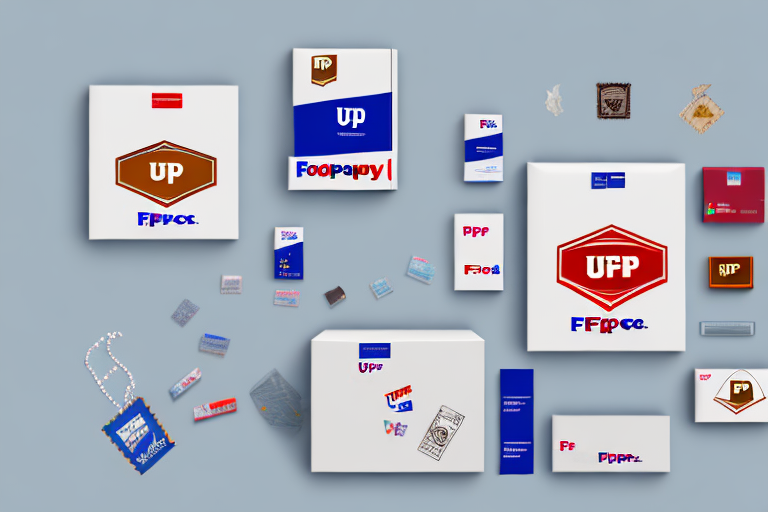Understanding the Peak Surcharge for FedEx Shipping
If you are a business owner who has been utilizing FedEx for your shipping needs, you may have noticed a recent increase in shipping costs during peak seasons. This increase is known as the Peak Surcharge implemented by FedEx. In this article, we will delve into the Peak Surcharge for FedEx Shipping, its history, the reasons behind it, and how it affects customers. We will also discuss ways to calculate shipping costs, tips for reducing those costs during peak seasons, and how to negotiate with FedEx on their surcharge policies. We will round up by talking about the impact of Covid-19 on FedEx's surcharge policies and future predictions for the Peak Surcharge within the shipping industry.
What is the Peak Surcharge for FedEx Shipping?
The Peak Surcharge is a temporary increase in shipping costs imposed by FedEx during its busiest seasons. Typically implemented from November through December, the surcharge helps FedEx manage the significant increase in shipping volume and associated costs experienced during the holiday season.
The Peak Surcharge can vary depending on the shipping service and destination. For instance, international shipments may incur higher surcharges compared to domestic shipments. Additionally, unexpected events such as natural disasters or global pandemics can trigger surges in shipping demand, potentially affecting the surcharge rates. It is advisable to check with FedEx for the most up-to-date information on Peak Surcharges before shipping during the busy holiday season.
The History of Peak Surcharges in the Shipping Industry
Peak surcharges are not new to the shipping industry. Major carriers like DHL and UPS have been implementing these surcharges for years to offset the costs of increased demand during peak seasons. FedEx introduced its Peak Surcharge in 2017, becoming a more recent entrant to this practice.
The concept of peak surcharges originated in the airline industry, where airlines would charge higher fares during peak travel times. The shipping industry adopted this practice to handle increased demand during peak seasons, such as the holiday period. These surcharges help cover additional costs incurred by shipping companies, including hiring extra staff and renting additional equipment.
While peak surcharges are intended to manage operational costs and maintain service reliability, they have been a topic of contention among customers, some of whom feel they are being unfairly charged. However, shipping companies argue that these surcharges are necessary to ensure consistent and reliable service during periods of high demand.
How Does the Peak Surcharge Affect FedEx Customers?
The Peak Surcharge can significantly impact FedEx customers, especially those who ship frequently during the busiest seasons. For example, packages shipped through FedEx Express or FedEx Ground during peak seasons may incur a surcharge of up to $4.90 per package.
Additionally, the Peak Surcharge can lead to longer delivery times. Higher package volumes during peak seasons can cause delays, frustrating customers who expect timely deliveries.
However, there are strategies customers can employ to mitigate the impact of Peak Surcharges:
- Plan Ahead: Shipping packages earlier in the season before surcharges take effect can help avoid additional costs.
- Alternative Carriers: Using other carriers such as USPS or UPS, which may have lower or no peak surcharges, can be a cost-effective alternative.
- Optimize Shipping Methods: Choosing more efficient shipping options or consolidating shipments can reduce costs.
What are the Reasons Behind FedEx's Peak Surcharge?
The primary reason behind FedEx's Peak Surcharge is to offset the increased operational costs associated with higher shipping volumes during peak seasons. These costs include:
- Higher Labor Expenses: Additional staffing and overtime pay are required to handle increased package volumes.
- Transportation Costs: Renting extra transportation vehicles and equipment to manage the surge.
- Infrastructure Upgrades: Enhancing operational capacities to maintain service levels.
Moreover, the Peak Surcharge encourages customers to plan their shipments in advance, allowing FedEx to manage its resources more efficiently and reduce the likelihood of delays or disruptions. By incentivizing earlier shipments, FedEx can better handle increased volumes and maintain consistent service reliability.
How to Calculate Your FedEx Shipping Costs with the Peak Surcharge
Understanding how to calculate FedEx shipping costs, including the Peak Surcharge, is essential for accurate budgeting. To calculate your shipping costs, you can use FedEx's online rate calculator.
The Peak Surcharge is a temporary fee added to standard shipping rates during peak seasons. This surcharge can significantly increase your total shipping costs. Therefore, it's crucial to factor in the Peak Surcharge when calculating your shipping expenses to avoid unexpected costs. Here are steps to calculate your shipping costs:
- Visit the FedEx Rate Calculator on the FedEx website.
- Enter the package details, including weight, dimensions, and destination.
- Select the shipping service you plan to use.
- Check for any applicable surcharges, including the Peak Surcharge.
- Review the total estimated cost.
Additionally, consider alternative shipping options or adjusting your pricing strategy to account for the surcharge.
Tips for Reducing Your Shipping Costs During Peak Seasons
While the Peak Surcharge may seem like an unavoidable expense, there are several strategies businesses can employ to reduce shipping costs during peak seasons:
- Plan Ahead: Ship packages earlier in the season before the surcharge is implemented.
- Use Alternative Carriers: Explore other carriers like USPS or UPS that may offer lower surcharges or discounts.
- Optimize Packaging: Use smaller, lighter boxes to reduce shipping fees. Efficient packaging can lead to significant savings.
- Consolidate Shipments: Combine multiple shipments into a single package to minimize costs.
- Negotiate Rates: Work with your shipping carrier to negotiate better rates based on your shipping volume.
- Offer Free Shipping Strategically: Provide free shipping for orders above a certain value to encourage larger purchases while absorbing the shipping costs.
Implementing these strategies can help manage and reduce your shipping costs during the most expensive periods.
How to Negotiate with FedEx on the Peak Surcharge
For frequent FedEx customers, there may be opportunities to negotiate the Peak Surcharge rates. Here are some strategies to consider:
- Consistent Shipping Volume: Demonstrate consistent or increasing shipping volumes throughout the year to gain leverage in negotiations.
- Long-Term Contracts: Offer to commit to long-term shipping contracts, which can provide stability for both parties and potentially secure better rates.
- Service-Specific Negotiations: Focus negotiations on specific services you use frequently, such as FedEx Ground, to achieve lower surcharge rates.
- Use Third-Party Logistics Providers: Partner with third-party logistics providers who have established relationships with shipping carriers and can negotiate on your behalf.
It's important to approach negotiations with data on your shipping volumes and patterns. Being prepared and demonstrating your value as a customer can increase your chances of successfully negotiating better surcharge rates.
The Impact of Covid-19 on FedEx's Peak Surcharge Policy
The Covid-19 pandemic has significantly impacted the shipping industry, leading to unprecedented increases in demand and shipping costs. In response, FedEx implemented a temporary surcharge on all domestic and international shipments in April 2020 to manage the surge in demand and operational challenges.
As the situation evolved, FedEx has adjusted its surcharge policies, resuming standard Peak Surcharge practices while continuing to monitor the impact of the pandemic on shipping operations. The pandemic underscored the importance of a resilient and adaptable supply chain, prompting FedEx to remain flexible in its surcharge policies to accommodate fluctuating demand and ensure service reliability.
Future Predictions for the Peak Surcharge in the Shipping Industry
Looking ahead, it is anticipated that peak surcharges will continue to be a standard practice among shipping companies to manage increased demand during busy seasons. Factors such as the growth of e-commerce and the increasing expectation for fast and reliable shipping options contribute to rising shipping volumes, necessitating the use of peak surcharges to cover additional operational costs.
According to industry experts, the trend of implementing peak surcharges is likely to persist as shipping companies strive to balance cost-efficiency with service reliability. Businesses should be prepared to incorporate these additional costs into their shipping budgets and strategies. Exploring alternative shipping options and carriers, as well as optimizing shipping processes, will be crucial for businesses to remain competitive and cost-effective in a dynamic shipping landscape.
In conclusion, the Peak Surcharge for FedEx Shipping represents a temporary increase in shipping costs during the company's busiest seasons. Understanding the surcharge, its historical context, and its impact on customers is essential for businesses relying on FedEx for their shipping needs. Utilizing tools like rate calculators, implementing cost-reduction strategies, and negotiating with carriers are vital steps in managing shipping expenses effectively during peak periods.
With the continued growth of the shipping industry and the persistence of high demand periods, businesses must stay informed about surcharge policies and adapt their shipping strategies accordingly to maintain profitability and customer satisfaction.








